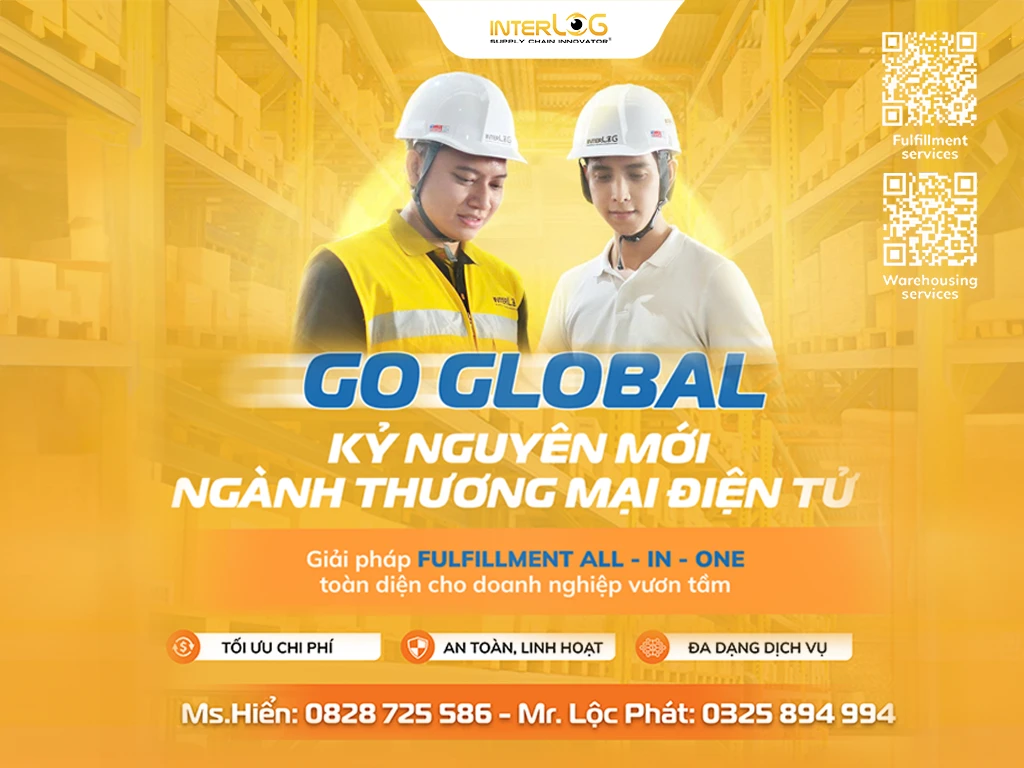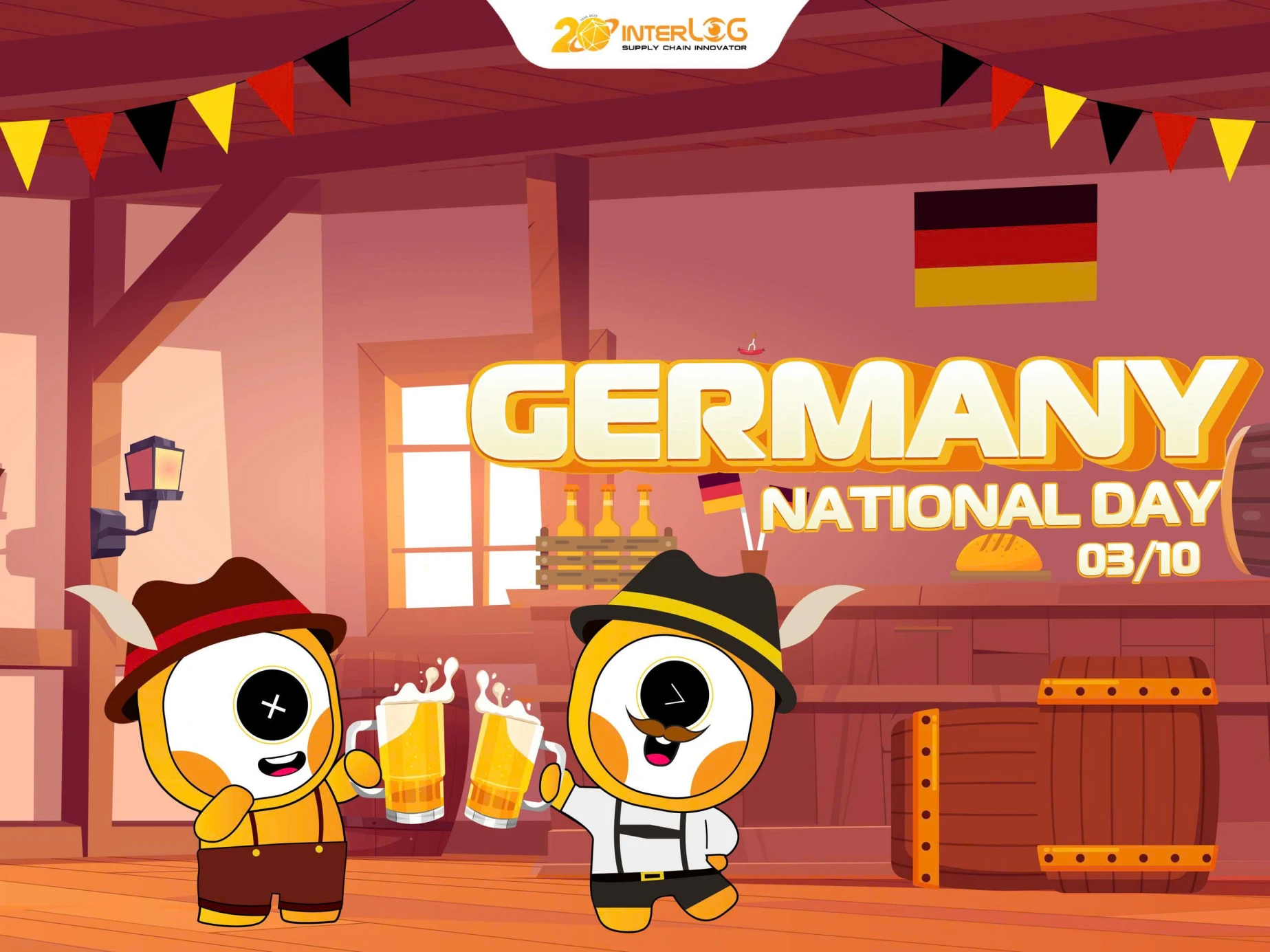


The 'G' Factor in ESG: The Golden Key to Sustainable Green Office Architecture
In the era of Industry 4.0, businesses are focusing on green transformation, investing in technology, digitalizing offices, and fostering sustainable connections among employees, partners, and customers. Redesigning offices for optimal functionality and flexibility, removing barriers in traditional office spaces, and organizing flexible human resource development programs have become crucial tasks that require innovation.
Why choose the ESG model for businesses?
After the pandemic, ESG factors (Environmental, Social, Governance - Environment, Social, and Governance) have gained widespread attention from investors, businesses, especially international technology conglomerates. Social and Governance aspects are closely related to building corporate culture and nurturing talent, while the Environment plays a vital role in the journey towards the 'Net Zero' emissions goal.
The ESG model is increasingly being adopted by businesses and InterLOG itself in designing an eco-friendly work environment, becoming the "key" to opening "golden doors" that help businesses maintain management, attract talents, customers, and develop sustainable frameworks.
According to Mr. Nguyen Duy Minh, Chairman of the Board and CEO of InterLOG, ESG is now considered a vital requirement for advanced businesses. Buildings that are environmentally friendly, foster connections between departments and employees, and create positive impressions for partners and customers are all developed in line with ESG standards. This approach has the potential to attract customers and talents to accompany the business in the long run. Most multinational corporations now have to meet ESG requirements, making the development of office ecosystems based on the ESG model a wise investment, minimizing risks, and optimizing business efficiency.
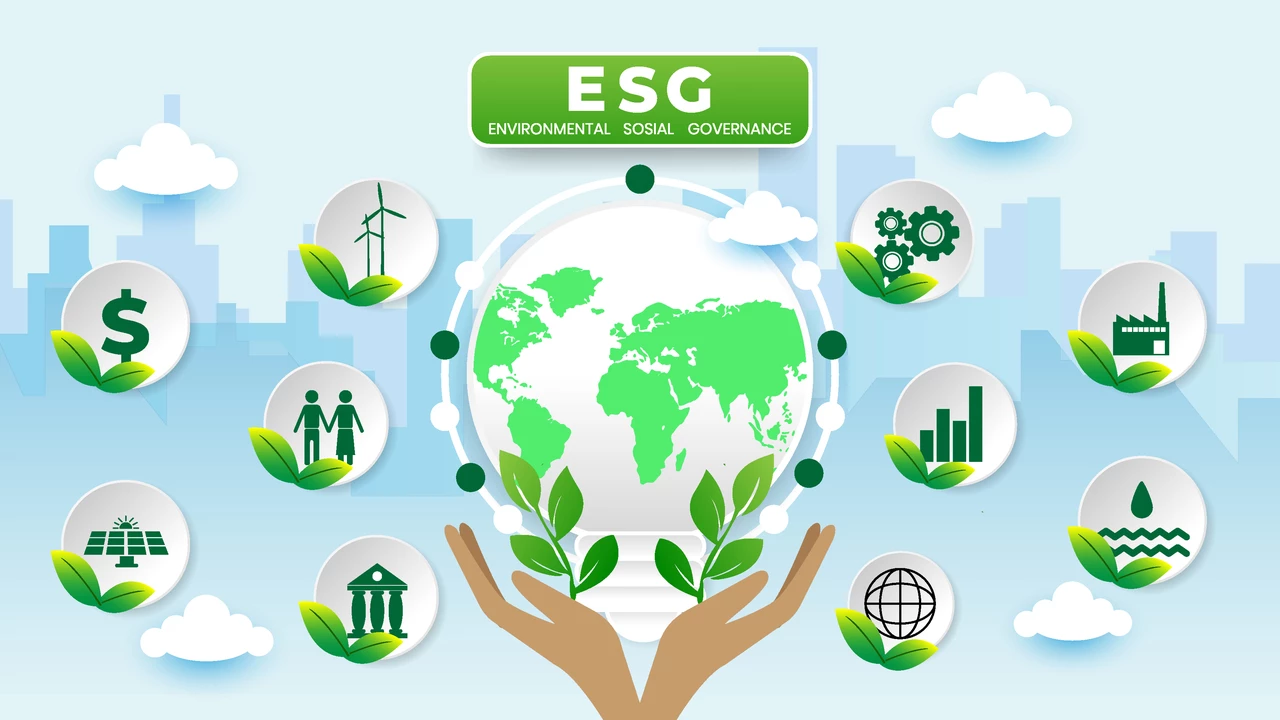
Prerequisites for a sustainable framework
In sustainable green office architecture, optimizing business management activities is crucial to ensuring the best work performance. The "G" factor - Governance - plays a decisive role in this, especially when applied to creating the most optimal workspace.
Optimizing flexible workspace
In the ESG model, designing a workspace or meeting space according to the "G" factor is not just a place for meetings. It also needs to be flexible to serve various purposes, including:
- Meeting spaces: Meeting rooms can be designed with flexibility to accommodate large meetings, team collaborations, or individual discussions. This flexible design optimizes space utilization and reduces wasteful use of resources.

- Training spaces: Training areas should be adaptable to serve multiple purposes, from training new employees to organizing in-depth training events. This facilitates convenient conditions for continuous development and learning within the organization.

- Networking spaces during events: Special events with customers can utilize flexible spaces to connect and create a friendly atmosphere within the organization. Having flexible spaces for these activities is essential for promoting team spirit and satisfaction among employees, customers, and partners.

Multifunctionality in furniture
Focusing on innovative solutions, the meeting area is designed in line with the spirit of #Innovation, one of InterLOG's core values:
Tables and Chairs: They can be designed to fold and connect, creating various models for different meeting themes.

Versatile Projection Screen: It can function as a curtain; when needed for projection, it can be pulled down to create a private space for optimal focus.

Sliding Doors: They can divide the space into 2 smaller rooms for small meetings or open up to merge into a large area for collective events.
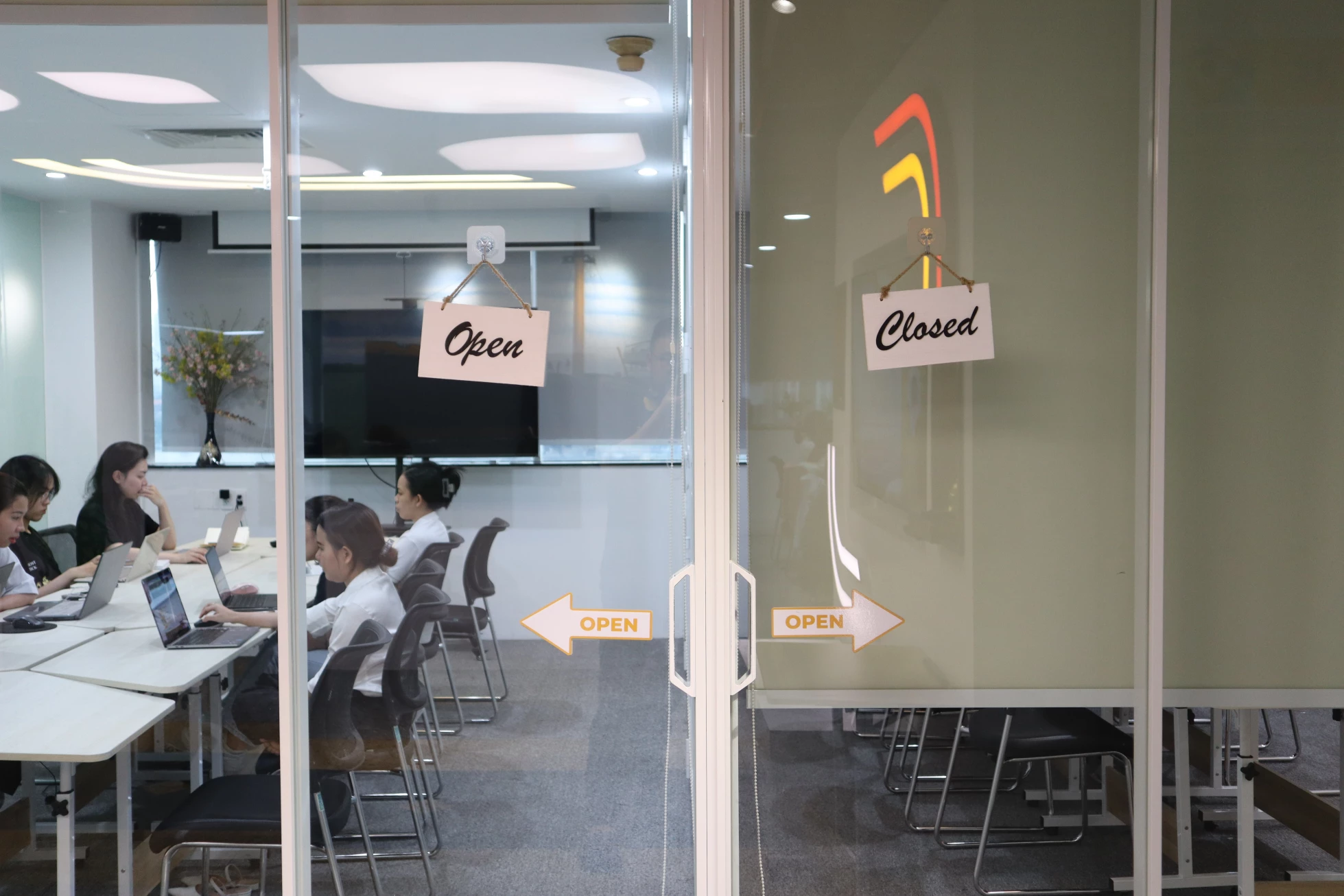
This ensures that workspace can be maximally utilized and flexibly adapted to specific job requirements.
From intrinsic connection to sustainable existence
Following a long-term strategy, InterLOG strongly focuses on expanding #PeopleDevelopment programs - a core value of the business, prioritizing the development and training of young talents, aiming for a sustainable talent pool. Therefore, innovative and sustainable office architecture is not only about connecting with clients and partners but also supporting and promoting the development of each individual.
Innovation, making a positive impression on employees and shareholders
We believe that creating a unique and innovative workspace is crucial in promoting the growth of each employee and making a positive impression on shareholders. From open meeting rooms with modern technology to harmonious sunlight and light balance, the design encourages creativity and fosters new ideas, contributing to shared values for both employees and shareholders, fostering development and creating new business opportunities.
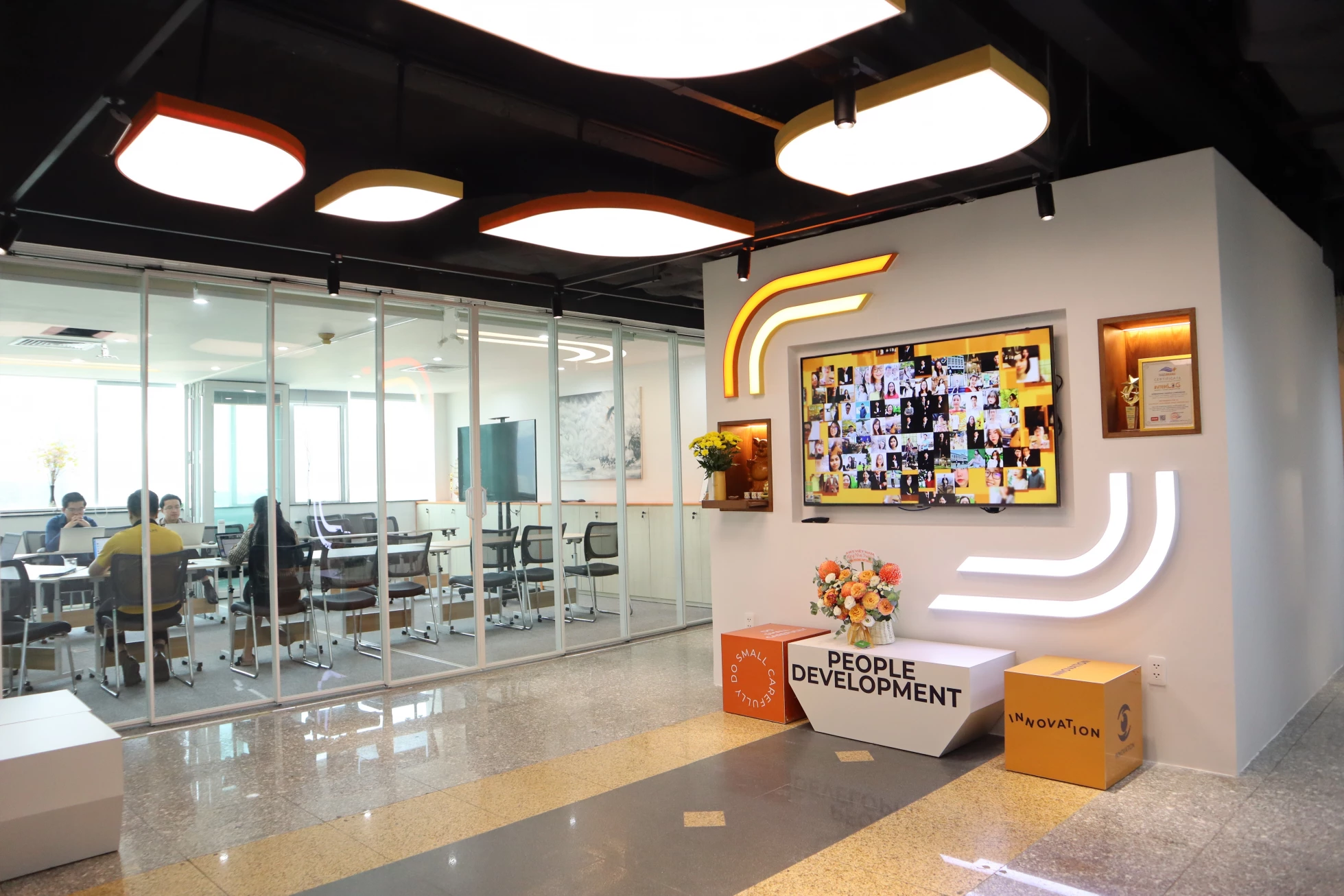
ESG creative office space, promoting efficient work ethic linked to the "E" in ESG
Promoting communication and interaction between internal staff and customers
Promoting communication and interaction between internal staff and customers is essential in any meeting or networking event. Features like the "Terraced Fields" painting in the reception area, inspired by Vietnam's natural landscapes, and the "Connecting Ancestors" area honoring revolutionary social, cultural, and educational initiatives create an environment for sharing new ideas and connecting with fresh perspectives. This unique corporate culture sets the stage for every interaction with clients and partners.

Optimizing office functionality with a Minimalistic Style
Drawing inspiration from the sophisticated simplicity of Japanese minimalism in office design, we focus on simplifying space and furniture. Dominated by colors like orange (energy) and yellow (happiness), this design represents youthfulness and encourages daily creativity. By eliminating barriers between different departments and uniting them into an open office block, using environmentally friendly materials, we create a connected workspace between "pioneers" and the "future talents" of the nation.

The golden key to achieving greatness
In this modern age, recognizing the importance of managing human factors within the corporate ecosystem cannot be overlooked; it is the "golden key" for sustainable business development. Green office architecture under the ESG model, especially the "G" factor (Governance), not only demonstrates a commitment to sustainable green goals to partners, investors, and communities but also acts as a connector, bringing aspects of E (Environment) and S (Society) together.
Effective corporate management ensures that building green office architecture is not merely a temporary trend but an integral part of the organization's sustainable business strategy. This includes training and developing talents, connecting with customers, and opening up innovative business strategies, creating a dynamic work ecosystem that constantly strives for innovation and renewal. This is also a testament to InterLOG's strong commitment to ESG-based sustainable development strategies in recent years.
.gif)
With a fresh work environment, excellent employee benefits, and attractive welfare packages, InterLOG has become one of the companies providing employees with abundant opportunities for development, self-improvement, and career advancement.
